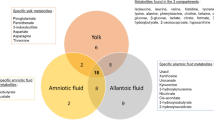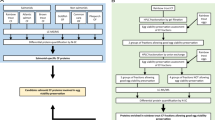Abstract
WE wish to report some preliminary findings obtained in the course of a rather extensive investigation into the nature of precursors of embryonic chick proteins (for some recent reviews, see refs. 1 and 2). In these experiments, amino-acids, chicken serum globulin and ovalbumin, labelled in their sulphur amino-acids with sulphur-35, were prepared. Torulopsis utilis was grown on sulphur-35 sulphate (obtained from Oak Ridge National Laboratory), according to Wood and Perkinson3; after extracting the yeast protein with organic solvents4 it was hydrolysed with a 1 : 1 mixture of 6 N hydrochloric acid and 90 per cent formic acid. The humin was removed by centrifugation, and a portion of the neutralized hydrolysate corresponding to 50 mc. of the original sulphur-35 sulphate was injected intraperitoneally into a laying White Leghorn hen in two doses, about five hours apart. Eight hours after the second injection the blood was withdrawn by heart puncture, allowed to clot and serum globulin prepared5. The oviduct was removed from the hen and ovalbumin prepared essentially as described by Steinberg and Anfinsen6. Both proteins were treated with cysteine at a pH of 8.0–8.5 to assure removal of all exchangeable sulphur-35, and were afterwards dialysed. Peptides were prepared by peptic hydrolysis of the ovalbumin and of the serum globulin. Aliquots of the radioactive amino-acids, ovalbumin, ovalbumin peptides, serum globulin or serum globulin peptides were counted as described for proteins, peptides and amino-acids7. Others were injected into the yolks of unincubated, embryonated White Rock eggs. The eggs were first swabbed with 70 per cent ethanol at the place to be injected; a small hole was made in the side of the egg, and 0.05–0.1 ml. of the radioactive solution containing 0.3–1.8 mgm. and 6,000–25,000 counts per min. was injected into the yolk. The hole was immediately sealed with paraffin, and the eggs were incubated at 38° C. under conditions of controlled humidity. Two to three dozen eggs were normally injected with one of the protein precursors. Starting with the fifth and ending on the ninth day after the injection, embryos were harvested and a number pooled. The mixture was homogenized for about 3 min. in a Potter–Elvehjem homogenizer in Ringer's or isotonic saline solution, made up to either 10 ml. (fifth and sixth days) or 20 ml. (seventh–ninth days) and precipitated by the addition of 40 per cent trichloroacetic acid, to a final concentration of 8 per cent. Dry protein powders were then prepared and counted to within 5 per cent of standard deviation, corrections for self-absorption and decay being made in each case7.
This is a preview of subscription content, access via your institution
Access options
Subscribe to this journal
Receive 51 print issues and online access
$199.00 per year
only $3.90 per issue
Buy this article
- Purchase on Springer Link
- Instant access to full article PDF
Prices may be subject to local taxes which are calculated during checkout
Similar content being viewed by others
References
Schechtman, A. M., in Butler, E. G., ed., “Biological Specificity and Growth”, 3 (Princeton, 1955).
Rudnick, D., ed., “Aspects of Synthesis and Order in Growth” (Princeton, 1954). Miner, R. W., ed., “The Chick Embryo in Biological Research”, Ann. N.Y. Acad. Sci., 55, Art. 2, 37 (1952).
Wood, J. L., and Perkinson, jun., J. D., Document 3482, American Documentation Institute (1951).
Williams, R. B., and Dawson, R. M. C., Biochem. J., 52, 314 (1952).
Friedberg, W., Walter, H., and Haurowitz, F., J. Immunol., 75, 315 (1955).
Steinberg, D., and Anfinsen, C. B., J. Biol. Chem., 199, 25 (1952).
Walter, H., Haurowitz, F., Fleischer, S., Lietze, A., Cheng, H. F., Turner, J. E., and Friedberg, W., J. Biol. Chem. (in the press).
Romanoff, A. L., and Romanoff, A. J., “The Avian Egg” (New York, 1949).
Loftfield, R. B., and Harris, A., J. Biol. Chem., 219, 151 (1956).
Romanoff, A. L., Ann. N.Y. Acad. Sci., 55, 288 (1952).
Francis, M. D., and Winnick, T., J. Biol. Chem., 202, 273 (1953).
Author information
Authors and Affiliations
Rights and permissions
About this article
Cite this article
WALTER, H., BULBENKO, A. & MAHLER, H. Precursors of Embryonic Chick Proteins. Nature 178, 1176–1177 (1956). https://doi.org/10.1038/1781176a0
Issue Date:
DOI: https://doi.org/10.1038/1781176a0
Comments
By submitting a comment you agree to abide by our Terms and Community Guidelines. If you find something abusive or that does not comply with our terms or guidelines please flag it as inappropriate.



